string s;
while(getline(cin,s)){
cout << "---" << endl
for(auto c: s) cout << int(c) << endl;
}
cout << "Exiting";
If my input is Ctrl+Z, then I press enter once, and my program exits immediately.
^Z
Exiting
If I enter a character before pressing Ctrl+Z, then I have to press enter twice, and my program does not exit.
s^Z
---
115
26
I had always interpreted Ctrl+Z as the EOF character. getline would continue until it reaches this character, at which point getline tests false and my program would exit. I'm curious why my program interprets Ctrl+Z as the substitute character 26, depending on whether there is a preceding character or not, and why it was necessary for me to press Enter twice in the second example?
